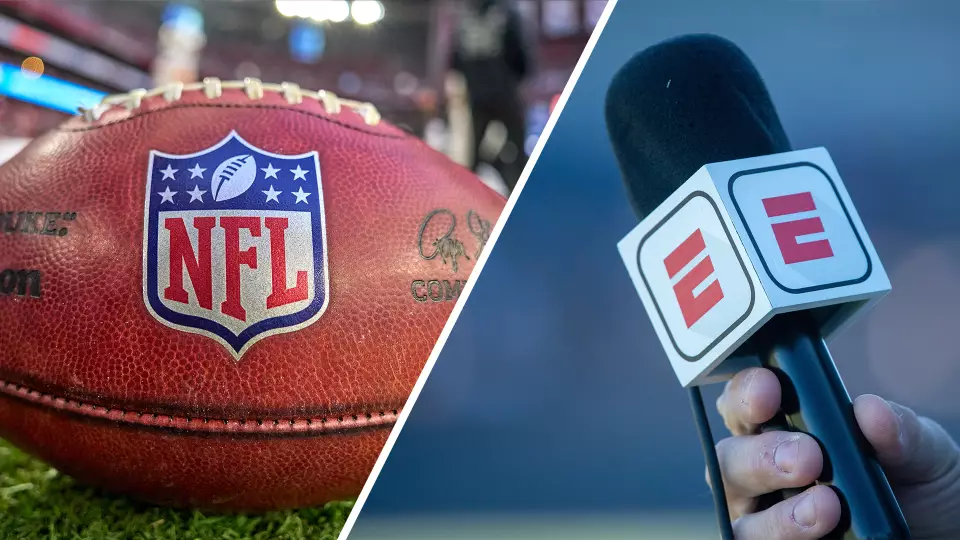In a groundbreaking maneuver, ESPN’s acquisition of the NFL Network and a suite of related NFL media assets signifies a pivotal shift not only for sports broadcasting but also for how fans consume football content. This strategic deal, which grants ESPN a 10% equity stake and rights to flagship properties like the RedZone channel, demonstrates a clear intent to dominate football media and redefine fan experiences. The implications reach far beyond mere ownership; they mark a conscious effort to integrate traditional and digital platforms, creating an ecosystem where football enthusiasts can access content anytime, anywhere.
This move underscores ESPN’s broader ambition to shape the future of sports entertainment. By merging NFL’s media assets into its ecosystem, ESPN is positioning itself as the primary gateway for NFL fans. The integration of the NFL Network into ESPN’s upcoming direct-to-consumer streaming service signals an industry-resistant evolution: traditional TV remains relevant, while digital platforms grow more central. The balancing act of maintaining linear offerings while expanding digital access reflects a nuanced understanding that modern fans crave flexibility and instant access to their favorite sport.
The rights to the NFL’s popular RedZone channel, now owned fully by ESPN in terms of trademark and rights distribution, are particularly significant. RedZone’s high-octane, real-time highlights have revolutionized how viewers experience game day — capturing the heartbeat of every drive. ESPN’s control over this channel, combined with the NFL’s continued ownership of its digital rights, creates a hybrid architecture that maximizes reach without stifling competition. ESPN’s strategic focus on controlling these flagship content assets positions it as the central hub for football, effectively elevating its influence amid a crowded media landscape.
Transformative Impact on Fan Engagement and Content Distribution
The merging of the NFL’s fantasy product into ESPN Fantasy Football exemplifies a sophisticated vision to deepen fan engagement. Fantasy sports are now an essential element of football culture, and by making ESPN the official platform, the league leverages this trend to foster deeper, more personalized interactions. It’s a move that blurs the lines between passive viewing and active participation, turning fans into stakeholders. The potential for such integration is immense, giving ESPN an advantage in capturing daily engagement beyond game days, which is crucial for monetization and brand loyalty.
This deal also expands ESPN’s game licensing, adding three more NFL games to its portfolio per season. While the specific schedule remains undisclosed, the strategic benefit is clear: more games mean more content, more opportunities for ad revenue, and increased viewer engagement. The decision to shift some games from ESPN to NFL Network indicates flexibility and a nuanced approach to content distribution—balancing traditional pay-TV offerings with new streaming avenues.
Of considerable significance is ESPN’s commitment to preserving traditional pay-TV access for NFL content. This dual strategy acknowledges the importance of reach through established TV channels while simultaneously investing heavily in digital transformation. The continued operation of NFL Network and its integration into ESPN’s direct-to-consumer platform reveals an understanding that the future of sports media will be a hybrid of legacy TV and innovative streaming.
Strategic Stakes and Industry Reverberations
This deal also serves as a statement about ESPN’s and Disney’s confidence in their ability to dominate sports media. The partnership with NFL isn’t merely transactional; it’s a bold declaration that ESPN is poised to be the premier destination for football fans across all platforms. With ownership of key media assets and a prominent role in NFL broadcasting, ESPN is locking in its influence for the foreseeable future.
Moreover, the partnership offers an expanded universe of content, which is crucial as consumer behavior shifts towards more on-demand and personalized viewing experiences. Stephen A. Smith, loyal fans, and casual viewers alike stand to benefit from more tailored content, innovative storytelling, and accessible streaming options. This move also signifies a long-term bet on the scalability of digital sports media, positioning ESPN as an unstoppable force capable of evolving with technological and cultural shifts.
While critics may question whether this consolidation reduces competition, the bigger picture suggests that ESPN’s aggressive strategy could invigorate the sports media space, driving innovation and consumer choice through higher-quality, more engaging content. For fans, the union of NFL, ESPN, and Disney’s broad reach promises an exciting new chapter—where the thrill of football is more accessible, personalized, and immersive than ever before.


Leave a Reply